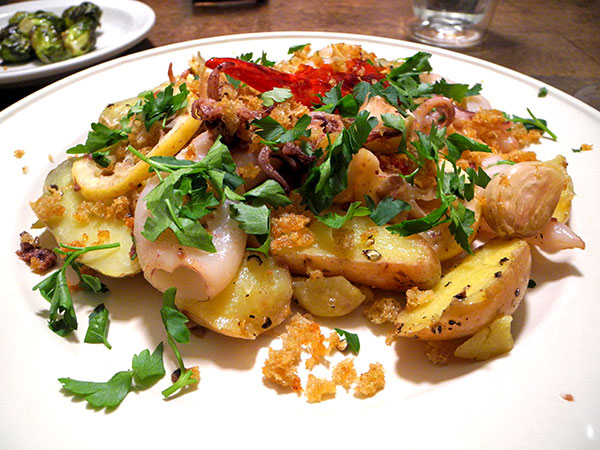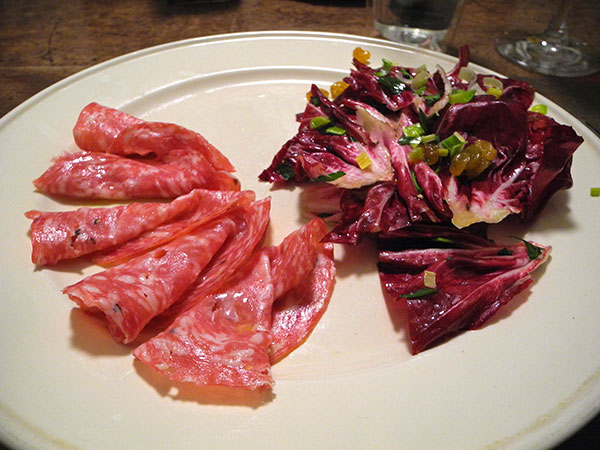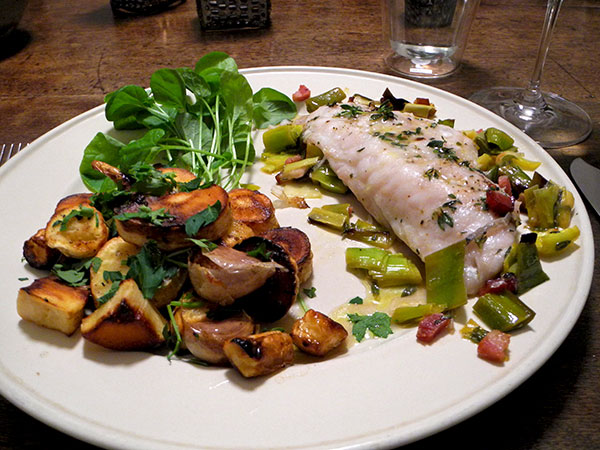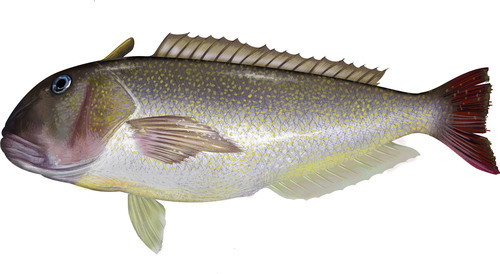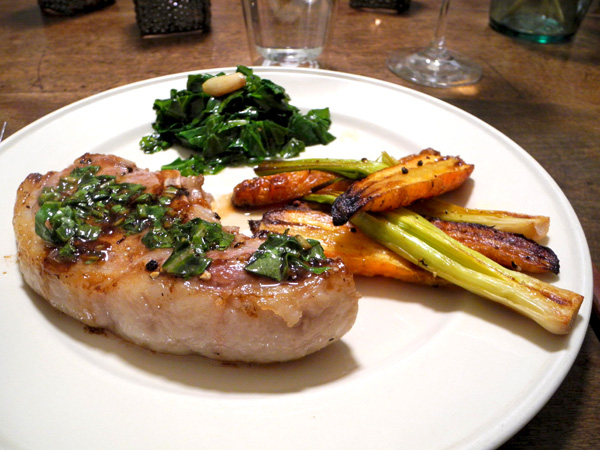I haven’t gotten this dish down to where I can say it always works out perfectly, even if we’ve always enjoyed it’s seductions, but I’m hoping to get there eventually. The ideal would be whites just set, yokes still slightly runny, and I’m pretty sure it’s as much about the mass and type of ingredients as it is about the timing. Part of my problem may be that I keep changing the rules, by which I mean, the ingredients used.
Incidentally, I had intended to add halved or sliced boiled potatoes to the mix this time, which would have made the dish more of a dinner course than it was, but I forgot to do so while I was rushing the light-handed improvising.
- two cazuelas brushed with olive oil, layered with a few leaves of white cabbage from Foragers and one branch of winter kale (including the chopped stem) from Rogowski Farm, both already briefly blanched, drizzled with a little cream, followed by sliced and halved Backyard Farms Maine cocktail tomatoes from Whole Foods, and one slice of Colameco’s uncured Capocollo and three eggs from Millport Dairy broken onto the surface of each, thinly-sliced baby leeks from Rogowski Farm scattered on top, everything seasoned with salt and pepper, and the dishes baked at 375º for about 20-25 minutes, or until the whites were set, which was just before shredded Parmesan cheese was added on top only a couple of minutes before
- slices of Trucio from Sullivan Street Bakery
- the wine was an American red, Pinot Noir, Smoking Loon 2012



